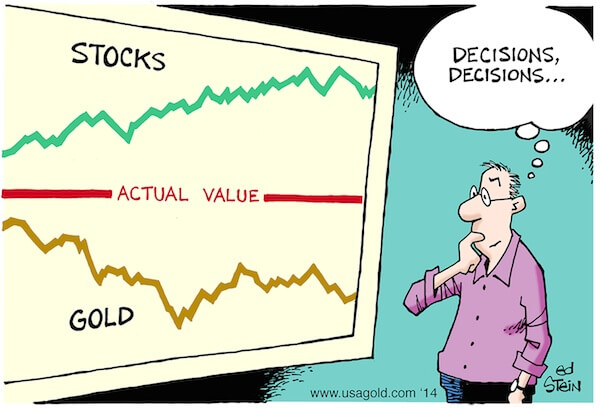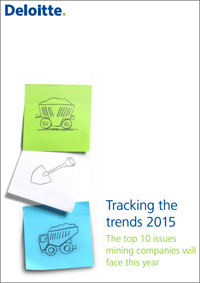
Juan Carlos Bravo
Mining & Power Industry Manager
It is the beginning of a new year and it has been already full of surprises in the mining industry: oil prices below $50 USD a barrel, affecting some oil sands produces and helping other miners on transportation costs; Copper prices going down to lowest levels in the past 5 years, but gold and silver prices have surged as investors look for a safe haven from declining currencies.

Source: Gold-Eagle, The Gold Owner’s Guide To 2015
But, the report’s authors are cautiously optimistic of a recovery in the mining industry since the US economy is rebounding, areas of Europe continue to stage a slow recovery and both China and India have a long way to go on their paths towards urbanization, industrialization and electrification. That is why this report suggests that mining companies are to look beyond the short term difficulties of the current market and structure themselves to be in prime positions for the long-term future with a clear business ethos and plan.
For the most part, mining companies are rising to this challenge, strengthening their cost reduction and capital allocation practices. While these are good first steps, more remains to be done. In order to position themselves for long-term growth, mining companies need the agility to move in unanticipated directions. This requires more sensitive scenario planning, more sophisticated data analysis and more intelligent risk management.
 The report focuses on the following trends:
The report focuses on the following trends:
- Back to basics – the pursuit of operational excellence
- Innovation is the new key to survival – it’s about more than cost control
- The new energy paradigm – reducing project power costs
- Dwindling project pipelines – walking the supply/demand tightrope
- Financing’s great disappearing act – the implication reverberate across the market
- Survival of the juniors – navigating troubled waters
- Seeking new skillsets – shifting industry realities call for a new generation of talent
- Riding the wave of geopolitical uncertainty – from best guess planning to embracing uncertainty
- Rising stakes around stakeholder involvement – companies struggle to balance competing interests
- Engaging with government – finding new ways to communicate and collaborate
In my opinion, this report is really well done and encompasses the biggest challenges the miners face in the short and long terms. It highlights the need for miners to rethink their traditional approaches, their technology deployments, financial strategies, and underlying corporate cultures in order to really achieve operational excellence.
It also highlights that at the core of creating this change are three things that I believe are at the most important as well as most challenging in the past:
- Getting serious about data analytics. Collect more data with the help of pervasive sensing from the process and equipment in order to perform more accurate and useful information and looked for hidden efficiencies or do better decision making. Normally, companies shy away from data analytics due its complexity, but remember that as data analysis becomes increasingly sophisticated, opportunities for even greater efficiency arise.
- Embracing innovation. As the report stated, true productivity can only be achieved by finding ways to cut the industry’s largest expenses, not by simply reducing costs around the edges. This means embrace new concepts and new technologies like Wireless, Energy Monitoring, Advance Control, Reliability Centered Maintenance, image analysis, etc. All of these technologies and expertise will help assist in the shift.
- Revisiting your culture and going modular. Operational excellence requires an enterprise-wide view of operations. Rather than undertaking isolated initiatives at individual mines, companies need a common language and approach to drive operational excellence across the organization. This takes more than a doctrine; it also requires a cultural transformation. That in essence is embracing integrated operations (iOps).
In conclusion, I believe that miners will continue to face tough challenges in the short term, but it will be up to them to change their respective cultures and embrace innovation in order to succeed in the long term. The old saying, “adapt or perish” still applies.
From Jim: You can connect and interact with other mining professionals in the Metals and Mining group of the Emerson Exchange 365 community.
